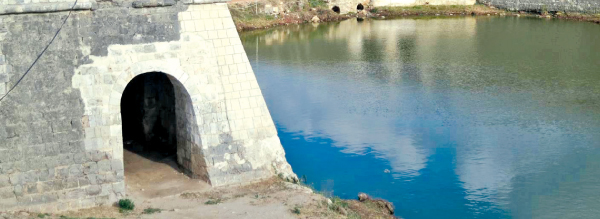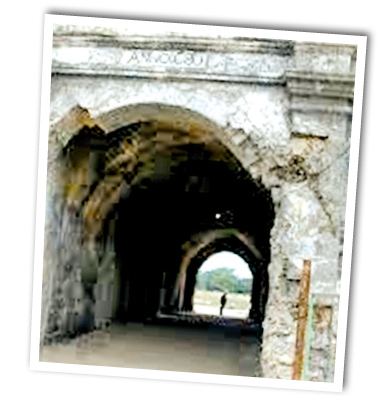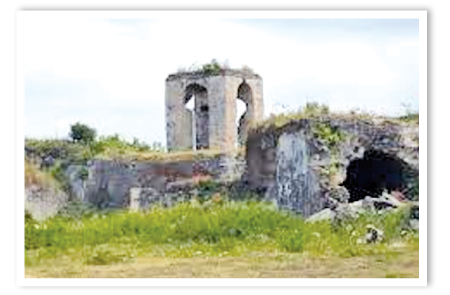Jaffna Fort

The Jaffna Fort is situated at the edge of a lagoon. It is the second
largest Fort in Sri Lanka. It is pleasant to visit the Fort in the
evenings or early in the morning. It is very difficult to walk around
and see the place in the afternoons as the sun is scorching.
  It was built by the Portuguese in 1619, re-built and expanded by the
Dutch during the 17th and 18th centuries. It was built by the Portuguese in 1619, re-built and expanded by the
Dutch during the 17th and 18th centuries.
It was expanded to facilitate trading activities of the northern
region. It not only indicates Jaffna's strategic importance to Europeans
but also its significance throughout Sri Lanka's history.
The five-sided inner defence works consist of thick, high ramparts
and bastions with a wide and deep moat around it. The layout resembles a
geometrically regular pentagon which is defined by the ramparts with a
bastion at each corner of the pentagon. Beyond these defence works is
the star shaped moat, the outline of which roughly follows the bastion
and rampart walls.
The outer defence works include the glacis, ravelins and a covered
way. Unlike the Dutch Forts in Galle and Colombo which were fortified
towns, the Jaffna Fort was exclusively military and administrative unit.
 The Fort is the only surviving example in Sri Lanka where its inner
defences has a geometrically regular pentagonal layout. Moreover, this
is the only example in the island where outer fortifications consisting
of glacis and ravelins can be seen. Significant buildings of
architectural importance are the Fort. The church built in 1706, within
the walled enclosure was one of the most impressive architectural works
in the northern region. The Fort is the only surviving example in Sri Lanka where its inner
defences has a geometrically regular pentagonal layout. Moreover, this
is the only example in the island where outer fortifications consisting
of glacis and ravelins can be seen. Significant buildings of
architectural importance are the Fort. The church built in 1706, within
the walled enclosure was one of the most impressive architectural works
in the northern region.
 This building which lacks significant ornamentation, showed how
effective a building architecture could be, if proportions (both
exterior as well as interior) and massing of volumes are correctly
achieved. This building which lacks significant ornamentation, showed how
effective a building architecture could be, if proportions (both
exterior as well as interior) and massing of volumes are correctly
achieved.
The sheer vertical, enhanced by its roof structure and high gable
facades had made it the dominant structure of the entire town scape. The
Queen's House (formerly, the Governor's Residence) was the best example
of domestic building of the northern region which represented at its
best, the architectural characteristics that developed during the 17th
and 18th centuries in Sri Lanka.
In its final evolution, this stately building had a wide and spacious
double- pillared veranda.
The Jaffna Fort with such heritage values of national and
international significance was in a perfect state of preservation until
the civil war erupted in the mid 1980's.
The fortifications and buildings within it were severely damaged due
to artillery fire. The church is now reduced to a heap of rubble.

Compiled by Husna Inayathullah |

